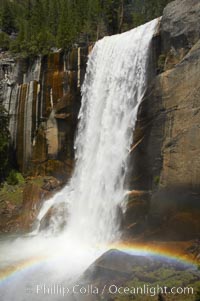
Vernal Falls at peak flow in late spring, with a rainbow appearing in the spray of the falls, viewed from the Mist Trail.
Location: Vernal Falls, Yosemite National Park, California
Image ID: 12634
Location: Vernal Falls, Yosemite National Park, California
Image ID: 12634
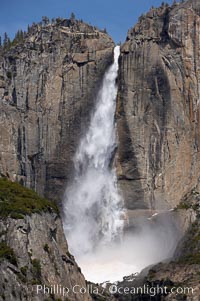
Upper Yosemite Falls near peak flow in spring. Yosemite Falls, at 2425 feet tall (730m) is the tallest waterfall in North America and fifth tallest in the world. Yosemite Valley.
Location: Yosemite Falls, Yosemite National Park, California
Image ID: 16066
Location: Yosemite Falls, Yosemite National Park, California
Image ID: 16066
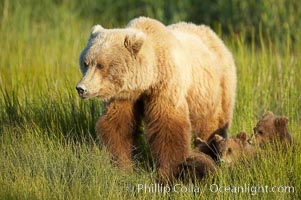
Brown bear female sow in sedge meadow, with her three spring cubs hidden by the deep grass next to her. These cubs were born earlier in the spring and will remain with their mother for almost two years, relying on her completely for their survival.
Species: Brown bear, Ursus arctos
Location: Lake Clark National Park, Alaska
Image ID: 19154
Species: Brown bear, Ursus arctos
Location: Lake Clark National Park, Alaska
Image ID: 19154
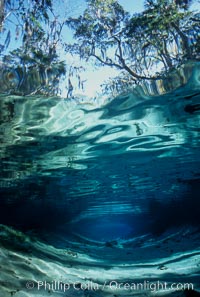
Three Sisters Springs depicted in an underwater landscape with sand, clear water and trees.
Location: Three Sisters Springs, Crystal River, Florida
Image ID: 02673
Location: Three Sisters Springs, Crystal River, Florida
Image ID: 02673
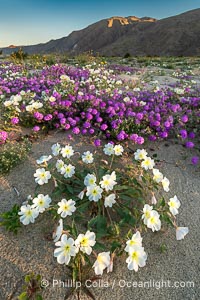
Spring Wildflowers Bloom in an Colorful Bouquet in Anza Borrego Desert State Park. Dune evening primrose (white) is mixed with sand verbena (purple) near Henderson Canyon Road, Spring 2024. Sunrise light barely illuminating the flowers.
Species: Dune evening primrose, Sand verbena, Oenothera deltoides, Abronia villosa
Location: Anza-Borrego Desert State Park, Borrego Springs, California
Image ID: 40271
Species: Dune evening primrose, Sand verbena, Oenothera deltoides, Abronia villosa
Location: Anza-Borrego Desert State Park, Borrego Springs, California
Image ID: 40271
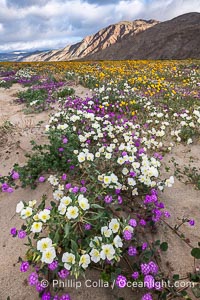
Spring Wildflowers Bloom in an Colorful Bouquet in Anza Borrego Desert State Park. Dune evening primrose (white) is mixed with sand verbena (purple) and desert sunflower (yellow) near Henderson Canyon Road, Spring 2024.
Species: Dune evening primrose, Desert Sunflower, Oenothera deltoides, Geraea canescens
Location: Anza-Borrego Desert State Park, Borrego Springs, California
Image ID: 40294
Species: Dune evening primrose, Desert Sunflower, Oenothera deltoides, Geraea canescens
Location: Anza-Borrego Desert State Park, Borrego Springs, California
Image ID: 40294
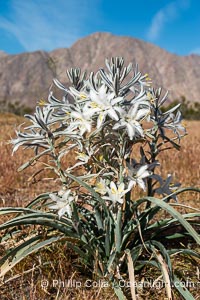
Desert Lily Blooming in Anza Borrego Desert State Park. While the Desert Lily is typically an uncommon or rare flower, in Spring 2024 it was present in enormous numbers. 2024 was the Year of the Desert Lily.
Species: Desert Lily, Hesperocallis undulata
Location: Anza-Borrego Desert State Park, Borrego Springs, California
Image ID: 40293
Species: Desert Lily, Hesperocallis undulata
Location: Anza-Borrego Desert State Park, Borrego Springs, California
Image ID: 40293
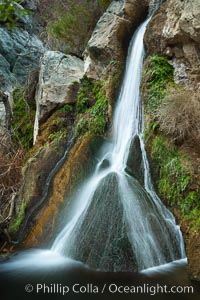
Darwin Falls in Death Valley, near the settlement of Panamint Springs. The falls are fed by a perennial stream that flows through a narrow canyon of plutonic rock, and drop of total of 80' (24m) in two sections.
Location: Death Valley National Park, California
Image ID: 27683
Location: Death Valley National Park, California
Image ID: 27683
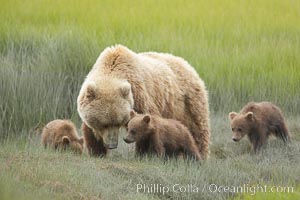
Brown bear female sow with spring cubs. These three cubs were born earlier in the spring and will remain with their mother for almost two years, relying on her completely for their survival.
Species: Brown bear, Ursus arctos
Location: Lake Clark National Park, Alaska
Image ID: 19181
Species: Brown bear, Ursus arctos
Location: Lake Clark National Park, Alaska
Image ID: 19181
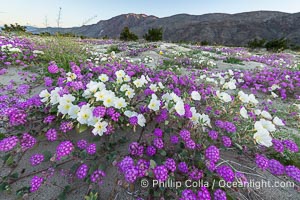
Spring Wildflowers Bloom in an Colorful Bouquet in Anza Borrego Desert State Park. Dune evening primrose (white) is mixed with sand verbena (purple) near Henderson Canyon Road, Spring 2024. Just before sunrise with flowers in shade.
Species: Dune evening primrose, Sand verbena, Oenothera deltoides, Abronia villosa
Location: Anza-Borrego Desert State Park, Borrego Springs, California
Image ID: 40272
Species: Dune evening primrose, Sand verbena, Oenothera deltoides, Abronia villosa
Location: Anza-Borrego Desert State Park, Borrego Springs, California
Image ID: 40272
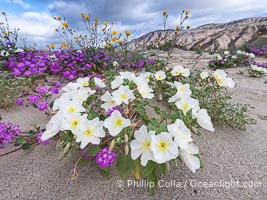
Spring Wildflowers Bloom in an Colorful Bouquet in Anza Borrego Desert State Park. Dune evening primrose (white) is mixed with sand verbena (purple) near Henderson Canyon Road, Spring 2024.
Species: Dune evening primrose, Oenothera deltoides
Location: Anza-Borrego Desert State Park, Borrego Springs, California
Image ID: 40298
Species: Dune evening primrose, Oenothera deltoides
Location: Anza-Borrego Desert State Park, Borrego Springs, California
Image ID: 40298
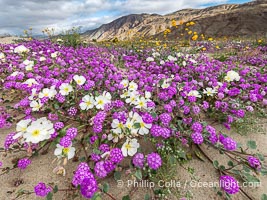
Spring Wildflowers Bloom in an Colorful Bouquet in Anza Borrego Desert State Park. Dune evening primrose (white) is mixed with sand verbena (purple) near Henderson Canyon Road, Spring 2024.
Species: Sand verbena, Abronia villosa
Location: Anza-Borrego Desert State Park, Borrego Springs, California
Image ID: 40299
Species: Sand verbena, Abronia villosa
Location: Anza-Borrego Desert State Park, Borrego Springs, California
Image ID: 40299
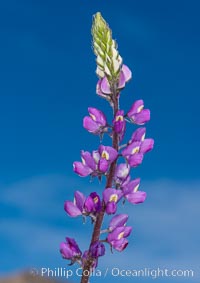
Arizona lupine is a common early spring ephemeral wildflower of the Colorado Desert. The purple-pink flowers show a yellow spot on the upper petal, which changes in color to red once the flower has been pollinated to discourage insects from visiting it after pollination.
Location: Anza-Borrego Desert State Park, Borrego Springs, California
Image ID: 35174
Location: Anza-Borrego Desert State Park, Borrego Springs, California
Image ID: 35174
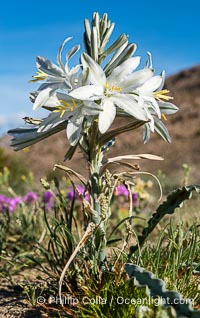
Desert Lily Blooming in Anza Borrego Desert State Park. While the Desert Lily is typically an uncommon or rare flower, in Spring 2024 it was present in enormous numbers. 2024 was the Year of the Desert Lily.
Species: Desert Lily, Hesperocallis undulata
Location: Anza-Borrego Desert State Park, Borrego Springs, California
Image ID: 40295
Species: Desert Lily, Hesperocallis undulata
Location: Anza-Borrego Desert State Park, Borrego Springs, California
Image ID: 40295
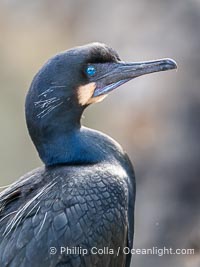
Brandt's Cormorant Portrait Overcast Light on La Jolla Cliffs, Brandt's cormorants gather in winter and early spring to nest and rear their chicks on the cliffs near La Jolla.
Species: Brandt's Cormorant, Phalacrocorax penicillatus
Location: La Jolla, California
Image ID: 40875
Species: Brandt's Cormorant, Phalacrocorax penicillatus
Location: La Jolla, California
Image ID: 40875
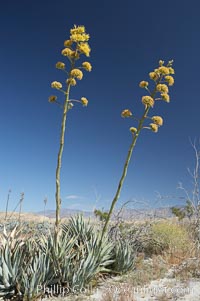
Desert agave, also known as the Century Plant, blooms in spring in Anza-Borrego Desert State Park. Desert agave is the only agave species to be found on the rocky slopes and flats bordering the Coachella Valley. It occurs over a wide range of elevations from 500 to over 4,000. It is called century plant in reference to the amount of time it takes it to bloom. This can be anywhere from 5 to 20 years. They send up towering flower stalks that can approach 15 feet in height. Sending up this tremendous display attracts a variety of pollinators including bats, hummingbirds, bees, moths and other insects and nectar-eating birds.
Species: Desert agave, Agave deserti
Image ID: 11550
Species: Desert agave, Agave deserti
Image ID: 11550
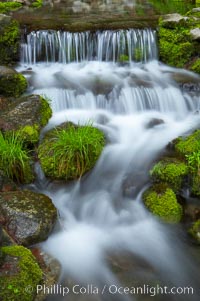
Fern Springs, a small natural spring in Yosemite Valley near the Pohono Bridge, trickles quietly over rocks as it flows into the Merced River.
Location: Fern Springs, Yosemite National Park, California
Image ID: 12650
Location: Fern Springs, Yosemite National Park, California
Image ID: 12650
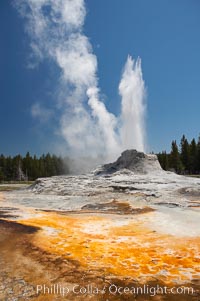
Castle Geyser erupts with the colorful bacteria mats of Tortoise Shell Spring in the foreground. Castle Geyser reaches 60 to 90 feet in height and lasts 20 minutes. While Castle Geyser has a 12 foot sinter cone that took 5,000 to 15,000 years to form, it is in fact situated atop geyserite terraces that themselves may have taken 200,000 years to form, making it likely the oldest active geyser in the park. Upper Geyser Basin.
Location: Upper Geyser Basin, Yellowstone National Park, Wyoming
Image ID: 13426
Location: Upper Geyser Basin, Yellowstone National Park, Wyoming
Image ID: 13426
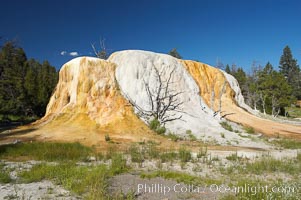
Orange Spring Mound. Many years of mineral deposition has built up Orange Spring Mound, part of the Mammoth Hot Springs complex.
Location: Mammoth Hot Springs, Yellowstone National Park, Wyoming
Image ID: 13614
Location: Mammoth Hot Springs, Yellowstone National Park, Wyoming
Image ID: 13614
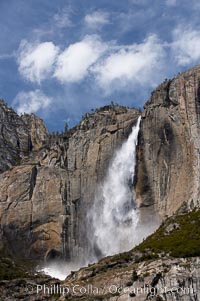
Upper Yosemite Falls near peak flow in spring. Yosemite Falls, at 2425 feet tall (730m) is the tallest waterfall in North America and fifth tallest in the world. Yosemite Valley.
Location: Yosemite Falls, Yosemite National Park, California
Image ID: 16068
Location: Yosemite Falls, Yosemite National Park, California
Image ID: 16068
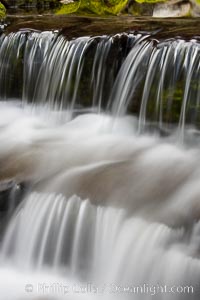
Fern Springs, a small natural spring in Yosemite Valley near the Pohono Bridge, trickles quietly over rocks as it flows into the Merced River. Yosemite Valley.
Location: Fern Springs, Yosemite National Park, California
Image ID: 16084
Location: Fern Springs, Yosemite National Park, California
Image ID: 16084
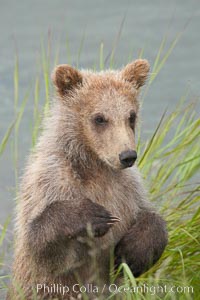
Brown bear spring cub, just a few months old.
Species: Brown bear, Ursus arctos
Location: Brooks River, Katmai National Park, Alaska
Image ID: 17056
Species: Brown bear, Ursus arctos
Location: Brooks River, Katmai National Park, Alaska
Image ID: 17056
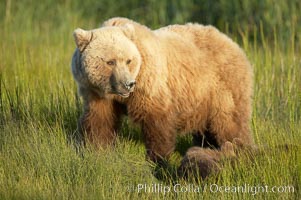
Brown bear female sow in sedge meadow, with her three spring cubs hidden by the deep grass next to her. These cubs were born earlier in the spring and will remain with their mother for almost two years, relying on her completely for their survival.
Species: Brown bear, Ursus arctos
Location: Lake Clark National Park, Alaska
Image ID: 19186
Species: Brown bear, Ursus arctos
Location: Lake Clark National Park, Alaska
Image ID: 19186
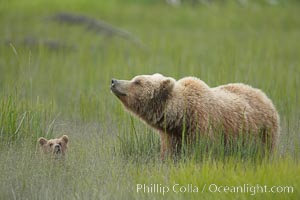
Brown bear female sow with spring cubs. These three cubs were born earlier in the spring and will remain with their mother for almost two years, relying on her completely for their survival.
Species: Brown bear, Ursus arctos
Location: Lake Clark National Park, Alaska
Image ID: 19205
Species: Brown bear, Ursus arctos
Location: Lake Clark National Park, Alaska
Image ID: 19205
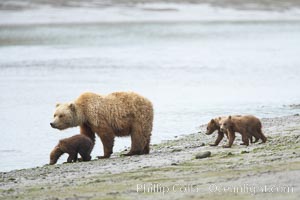
Brown bear female sow with spring cubs. These three cubs were born earlier in the spring and will remain with their mother for almost two years, relying on her completely for their survival.
Species: Brown bear, Ursus arctos
Location: Lake Clark National Park, Alaska
Image ID: 19206
Species: Brown bear, Ursus arctos
Location: Lake Clark National Park, Alaska
Image ID: 19206
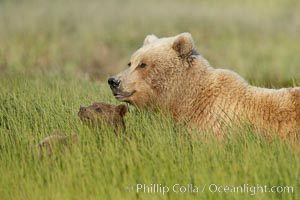
Brown bear female sow with spring cubs. These cubs were born earlier in the spring and will remain with their mother for almost two years, relying on her completely for their survival.
Species: Brown bear, Ursus arctos
Location: Lake Clark National Park, Alaska
Image ID: 19211
Species: Brown bear, Ursus arctos
Location: Lake Clark National Park, Alaska
Image ID: 19211
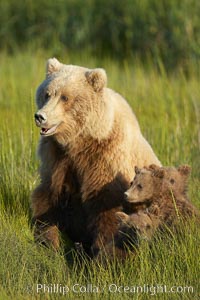
Brown bear female sow in sedge meadow, with her three spring cubs hidden by the deep grass next to her. These cubs were born earlier in the spring and will remain with their mother for almost two years, relying on her completely for their survival.
Species: Brown bear, Ursus arctos
Location: Lake Clark National Park, Alaska
Image ID: 19219
Species: Brown bear, Ursus arctos
Location: Lake Clark National Park, Alaska
Image ID: 19219
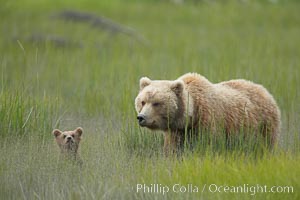
Female brown bear sow mother watches over her tiny spring cub in deep sedge grass.
Species: Brown bear, Ursus arctos
Location: Lake Clark National Park, Alaska
Image ID: 19228
Species: Brown bear, Ursus arctos
Location: Lake Clark National Park, Alaska
Image ID: 19228
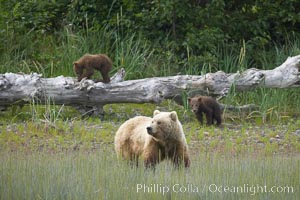
Brown bear female mother sow is on alert for the approach of other bears which may pose a threat to her three small spring cubs.
Species: Brown bear, Ursus arctos
Location: Lake Clark National Park, Alaska
Image ID: 19232
Species: Brown bear, Ursus arctos
Location: Lake Clark National Park, Alaska
Image ID: 19232
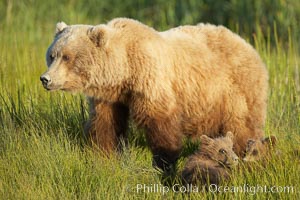
Brown bear female mother sow is on alert for the approach of other bears which may pose a threat to her three small spring cubs.
Species: Brown bear, Ursus arctos
Location: Lake Clark National Park, Alaska
Image ID: 19233
Species: Brown bear, Ursus arctos
Location: Lake Clark National Park, Alaska
Image ID: 19233